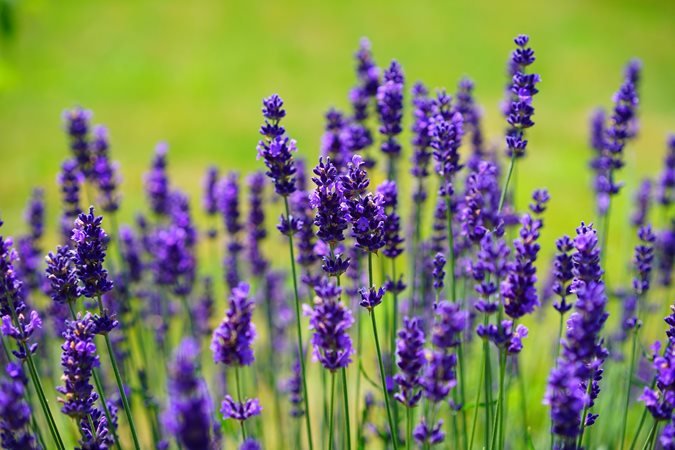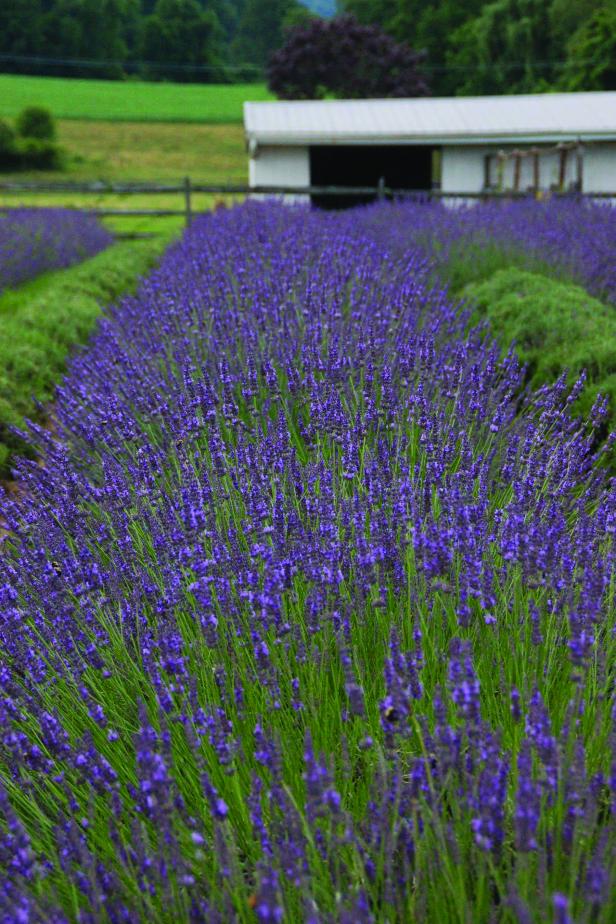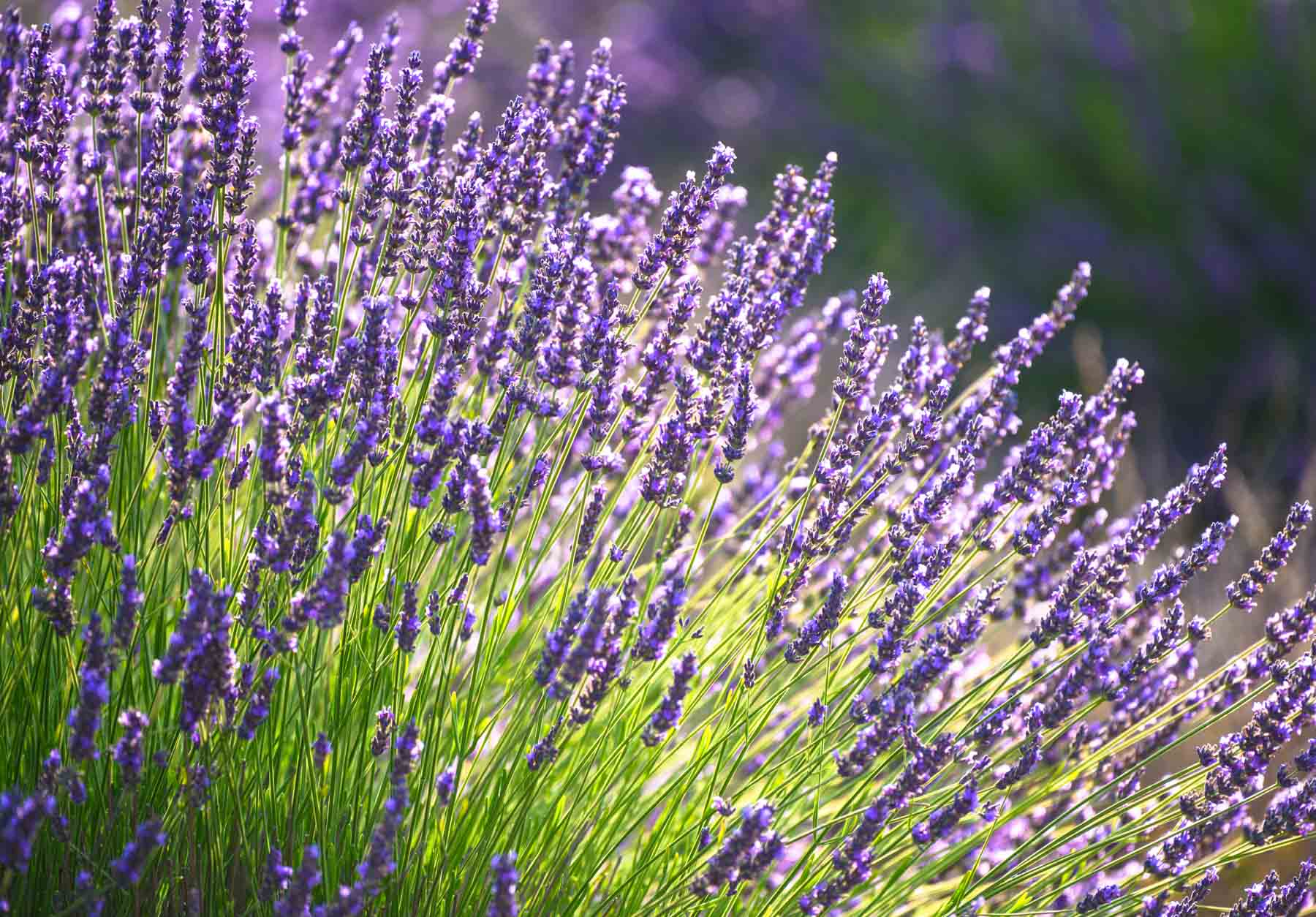
Because some lavender plants only live for one season in some regions or under unfavorable conditions, they are frequently mistaken for annuals. However, lavenders are perennial plants that, with the proper care and winter protection, can survive up to 15 years (depending on the cultivar).
The semi-woody perennial subshrub known as lavender grows and flowers every year. Lavenders are low-maintenance plants, but they do have some requirements. Some kinds are not winter hardy, thus they typically only live for one year, leading many to mistake them for annual plants.
Learn which species can withstand cold winters in the next paragraphs, as well as how to prolong the life of your lavender plant so that it can bloom and release scent year after year.
Table of Contents
Why lavenders are Mistaken for Annuals

This is typically because to the non-English lavender species’ poor cold tolerance, which prevents them from surviving winter frosts.
All English lavender species, including the well-known variants Munstead and Hidcote, are reliably cold hardy and can endure long winters with frost and snow.
However, the Spanish, Italian, and French lavenders cannot withstand subfreezing conditions and are frequently killed by the first winter frost.
While Spanish, Italian, and French (as well as all other non-English lavender species) will live for several years, they will only survive outdoors if they are planted in mild winter climates like those found in southern Europe’s Mediterranean region, where nighttime lows rarely fall below 50 oF (10 oC).
When gardeners plant non-English lavenders that are not cold hardy in gardens that experience winters with frosts and subfreezing temperatures, the question of whether lavenders are annuals or perennials is sometimes misunderstood.
After a year, this lavender must be discarded and replaced with new lavenders, a process that costs a lot of money.
However, you can plant cold-hardy English lavender cultivars in place of the Italian, Spanish, and French species to ensure that these lavenders survive the winter if you have the appropriate information.
Make ‘Annual’ Lavenders Last Longer then a Year

- Although poor drainage is a concern for lavenders year-round because of normally heavier rainfall and a slower evaporation rate, it is visibly worse in the winter.
- The lavender’s weaker, more delicate woody root can be broken by snow and ice, which can cause it to split. Normally, the wood doesn’t regenerate.
- Lavender types that are not cold-hardy should not be planted in regions that encounter frost.
With the right preparation and care, you can solve all three of these issues and extend the lifespan of your lavender.
1. If the soil is poorly drained, lavenders of all varieties are susceptible to winter death (much like an annual plant). Because their roots need to be dry, lavender plants require soil that drains swiftly and does not retain water.
Because of its Mediterranean ancestry, lavenders like sandy or gravelly soils because they have the appropriate structure to let water drain away from the roots effectively and to keep the soil consistently dyer even in winter when evaporation is significantly lower.
To prevent lavender plants’ roots from being exposed to moist debris all winter, amend the soil with roughly 30% sand or gravel and 70% compost, if necessary.
Gardeners may believe that lavender is an annual plant if the roots are in cold, damp soils because they will get the fugal disease, root rot, and die after the first year.
2. Even the cold-hardy English cultivars of lavender are susceptible to frost and snow damage over the winter if they are not adequately cared for.
Lavenders like little to no water over the winter when they are dormant, but if the soil is properly treated with sand and drains quickly, this is probably not a problem. If the lavender has been clipped and shaped to withstand harsh winter weather, that is usually the bigger concern.
The best times to prune lavenders are in the early spring and again at the end of the summer after the plant has blossomed.
Due to the mound’s shape, snow and water have a harder time damaging the woody growth at the lavender plant’s base. The surprising weakness of the woody growth makes it susceptible to splitting under any weight, whether heavy snowfall or simply the effects of changing temperatures.
Pruning the lavender each year is all that is required to control the woody development. This will prolong the life of the lavender plant, slow down the formation of wood, and encourage development that will support the fragrant, seasonal blooms.
Check out my article on how to get lavender plants ready for the winter for further details.
3. If your lavenders are the non-English type, there are a few precautions you should take to make sure they survive the winter like a perennial plant should and not wither away after the first year as an annual plant would.
If your region regularly sees winter frosts, you should either only plant the English species or dig up your lavender plants and move them to a pot.
Lavender plants in pots offer the obvious benefit of portability. They must be taken inside for safety at the first sign of temperature drops.
Bring the pots inside and set them on a window ledge by a light window (the more sun the better).
Lavenders don’t like permanent shade, so locations like a garage, heated green house, garden shed, or by a window in your home are great. However, I’d pick the window that gets the maximum sun.
Bring the pot inside over night and then set it back outside in the sun during the day if you are having trouble finding a sunny window to place your lavender.
You can put your pot back outside in the spring once winter has passed and anticipate the summer blooms.
Due of the frequently favorable draining conditions, lavenders do grow quite well in pots. Visit my informative post on growing lavender in pots for the complete instructions.
Depending on your situation, it may be preferable to place the lavender in a greenhouse or garage so that the temperature contrast isn’t quite so extreme. Be aware that problems can arise due to temperature fluctuations if the lavender is indoors overnight in a warm heated house and placed back outside in comparative cold during the day.
Alternative remedy. You can cover your non-English lavender with a cloche or heavy blanket to keep it warm on chilly evenings if you live in a climate where frosts and cold temperatures are uncommon but not unheard of. Just be sure to take it off in the morning to let the sun in.
Propagate Lavenders for Free Replacements
If your lavender plants do die in the winter, you can replace them without spending a lot of money by propagating extra plants.
Actually, propagation is fairly simple and doesn’t call for any specialized tools or technical expertise. The spring and summer months are ideal for taking cuts.
Check out this YouTube video for an easy-to-follow tutorial on how to easily propagate lavender since it is best taught visually:
Lavenders are regarded as annuals since they can develop and bloom in a single year before succumbing frequently to the effects of winter. Due to their lack of winter hardiness, non-English lavenders die after a year.
Key Takeaways
- Plants that are lavender are all perennials, not annuals.
- People often mistake lavenders for annual plants because they frequently die during the winter from damage from snow and ice, root rot in cold, wet soils, or simply because lavenders that are not cold resistant have been planted in regions that frequently see winter frosts.
- Lavenders need fast-draining soil that has been sand-amended, regular trimming to assist them withstand the impacts of cold weather, and protection from the worst of the cold if they are a non-hardy species if they are to survive more than a year.
- However, Spanish, French, and Italian lavenders will probably perish in the first frost, which is why they could be mistaken for annual plants rather than perennials. English lavenders can withstand winter frosts and bloom the following year.
- If your region often gets frosts, plant non-English lavenders in containers and bring them inside for the winter.
- If you have a lavender species that is not cold resistant, taking cuttings for propagation is a simple and affordable technique to increase the number of plants. With your propagated plants, you can replace any lavenders that did not make it through the winter.
FAQ
Should I bring my potted lavender inside for the winter?
Although lavender blooms best outside, you may also keep these fragrant gems alive indoors all winter. Additionally, lavender is not only attractive but also has a calming aroma that permeates every space.
How long does it take lavender to spread?
It could take one to three months for lavender to reach transplanting size due to its slow growth. Fungus is the main danger to lavender seeds and seedlings. While maintaining sufficient air circulation, keep the soil mixture moist to help prevent disease outbreaks.
Does lavender come back every year?
A Low-Maintenance Perennial Is Lavender. It’s a terrific investment because this beauty will return to your garden every year for roughly three to five years. However, I want to advise you to always pick plants that flourish in your plant hardiness zone before you make any plant purchases.
What do I do with my lavender plant in the winter?
Keep your plant in a cool, non-freezing area with sunlight and air flow if it will spend the winter indoors. Reduce how often you water plants. The amount of rain that naturally falls will be adequate for the plant because lavender enjoys a dry soil.
